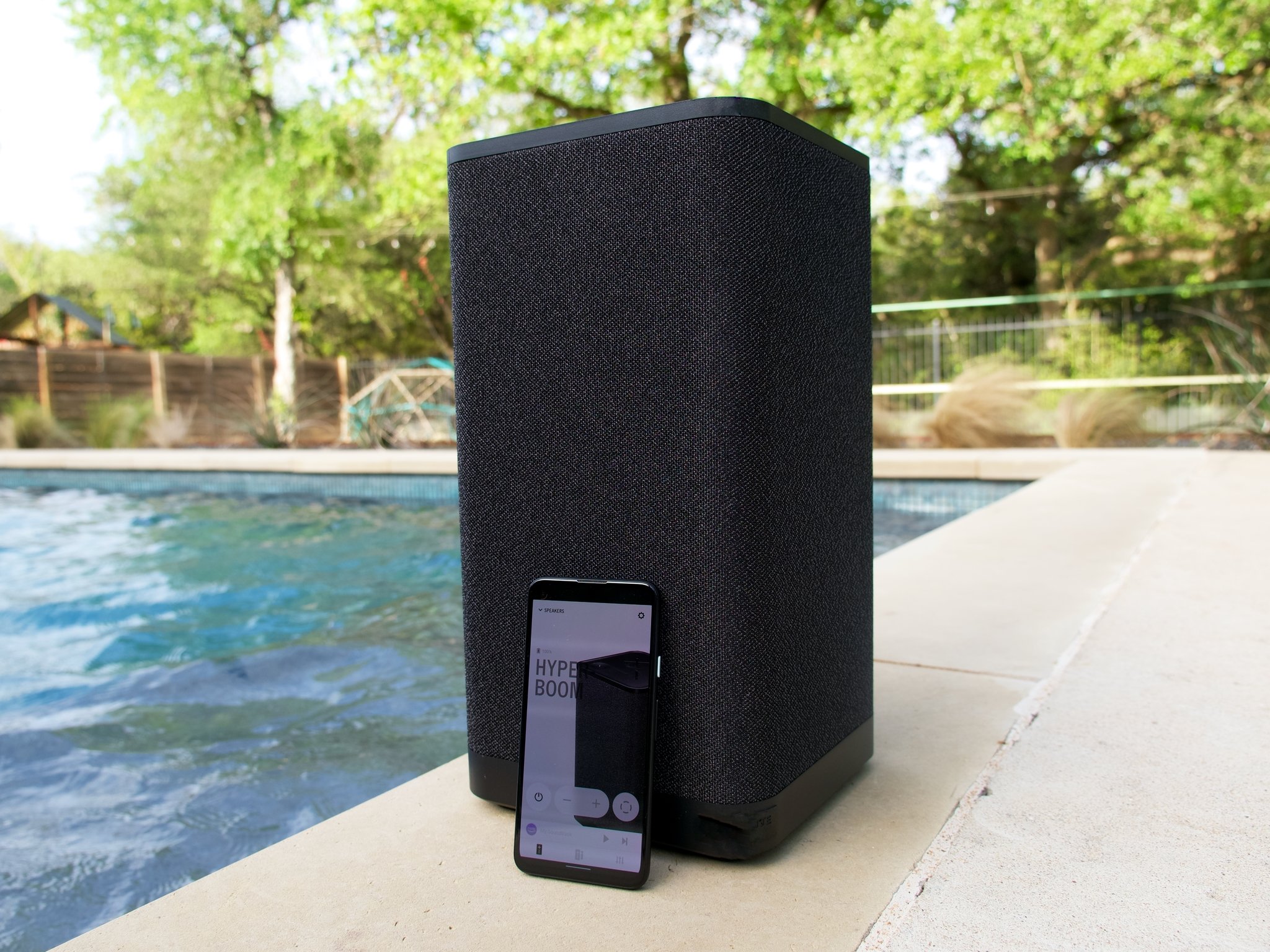Android Central Verdict
Bottom line: The Ultimate Ears Hyperboom is a statement piece of a speaker. It's big, it's loud, it's expensive, and it's not subtle at all. But with a variety of useful ports, great battery life, and amazing sound, it could be the only Bluetooth speaker you need. Lugging it around might also negate the need for that gym membership!
Pros
- +
Rich, loud, dynamic sound capable of filling any space
- +
IPX4 water-resistance
- +
Host of ports including AUX, USB-A charging, and optical
- +
Up to 24 hours of battery life
Cons
- -
This speaker is HUGE and a quite heavy
- -
It's a bit pricey for a portable speaker
- -
Doesn't have built-in smart voice assistant access
Why you can trust Android Central
I've covered many of the best Bluetooth speakers here at Android Central, but most of my personal experience has been with smart speakers from the likes of Sonos, Amazon, and Google. I hadn't used an Ultimate Ears product in quite some time, so of course, I was hyped when I had the chance to do this Hyberboom review.
I'm by no means an audiophile, but I know what sounds good and what doesn't (that had a Forrest Gump "I'm not a smart man, but I know what love is" ring to it). I know that the experts don't consider most Echo speakers to be amazing sounding, but I also know that high fidelity is not necessarily the most important quality for someone looking for a rugged, durable, and portable Bluetooth speaker. And yet, after spending some time with the Ultimate Ears Hyperboom, I think that this speaker could satisfy both the audiophile and the outdoor adventurist. It may be meant to take a beating, but it serves up some amazing beats itself.
Ultimate Ears Hyperboom: Price and availability
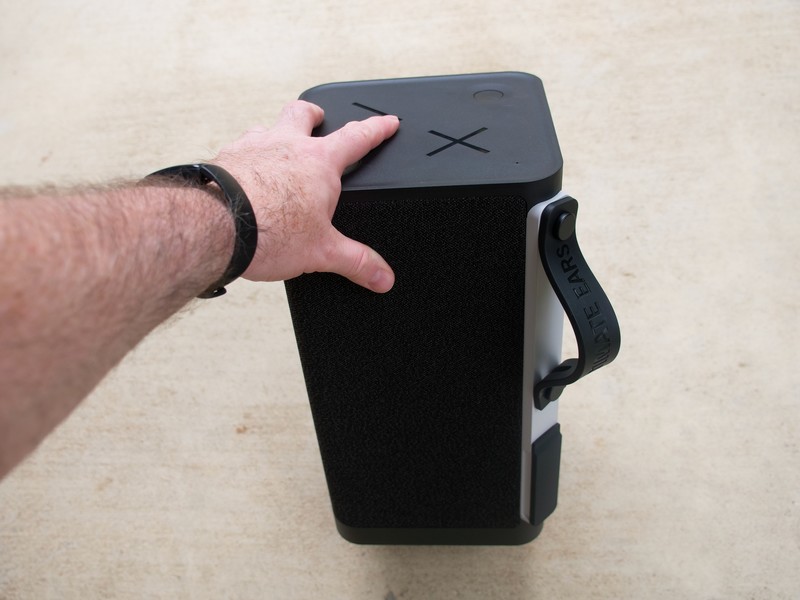
The Ultimate Ears Hyperboom has been out for just over a year now after making its debut in early March 2020. It was introduced with an MSRP of $399.99, which it still hovers around to this day. You can purchase it directly from the Ultimate Ears website or through popular retailers such as Amazon or Best Buy.
Ultimate Ears Hyperboom: What sounds good
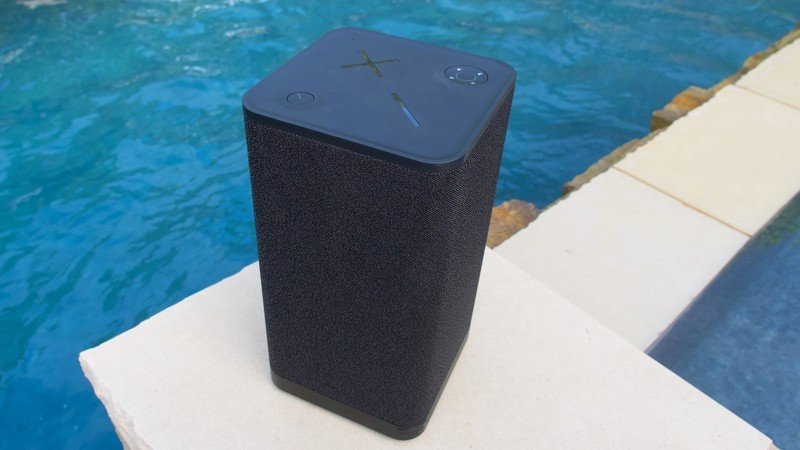
Though some might say that this speaker looks a bit unimaginative or utilitarian, I think that's where its beauty lies. It looks exactly like what it purports to be — a beast of a speaker. There is no unnecessary ornamentation or flashiness. It's just a few buttons, a few ports, and those massive, booming speakers. There's no need to overthink this.
The design may look unimaginative, but I see it as beautifully minimalistic.
The simple rectangular design kind of reminds me of that monolith from 2001: A Space Odyssey or one of those that kept popping up in the desert in Utah late last year, and it is a perfect stealthy vessel to enclose some impressive speakers. Its dual driver, woofer, and tweeter setup can push out 100 dBC, which is just below the human threshold for pain, and right around the level of a jet taking off from a few hundred meters away, so even the noisiest pool party or event shouldn't drown out the fun.
I played a variety of genres, from classic rock to ambient chillhop and from contemporary pop to 90s rap (RIP 2 Pac); it all sounded great to my ears. Inside my relatively small office, the sound completely filled the room in a balanced way without any noticeable distortions. When I took it to my brother's house to listen to outside by his pool, it was easy to hear it over the waterfall fountains and splashing.
Thankfully, I didn't have to worry about my nephews splashing around the Hyperboom, as it features IPX4 splashproof rating, which also protects it from light sprinkles and showers. Plus, there is a rubber flap that covers the ports, so you don't have to worry too much about water ingress.
Get the latest news from Android Central, your trusted companion in the world of Android
| Category | Ultimate Ears Hyperboom |
|---|---|
| Dimensions | 14.33 x 7.5 inches / 364 x 190 mm |
| Weight | 13 lbs / 5.9 kg |
| Audio | 2 x 4.5-inch drivers 2 1-inch woofers 2 x 3.5-inch tweeters 7.5-inch passive radiators |
| Ports | AUX-in, Optical in, USB-A charge out, service port (firmware updates) |
| Connectivity | Bluetooth 4.2 - 5.0; range up to 150 ft / 45 m Can pair up to 8 devices |
| Colors | Black |
When you're in your home (or even on your back porch), you can just leave it plugged in, but you shouldn't have any battery anxiety when you take it to the beach or the park. Its rechargeable lithium-ion battery can last up to 24 hours on a single charge, and you can even top up your smartphone several times over thanks to the included USB-A charging port. If you do get anxious, you can easily check the battery level by pressing down on the iconic volume + and - buttons on the top of the speaker. When home-based, the AUX and optical ports should come in handy, particularly if you want to connect this to other audio sources like your gaming console or TV.
I really like that Ultimate Ears includes an adaptive EQ setting in its mobile app. There are a few presets available, including BASS JUMP, GAME/CINEMA, and PODCAST, but you also have the option to adjust the EQ controls yourself and save your own custom sound profiles. I toggled between the presets based on what I was listening to and even messed around with creating my own, but to be honest, I was perfectly happy with the default settings most of the time.
I also liked that you can connect to one of several popular streaming services, including Amazon Music, Spotify, and Deezer, and then pre-save shortcuts to up to four of your favorite playlists to access from directly within the Ultimate Ears app. This way, you can just jump right in and start playing your favorite tunes without needing to go to your music app, start a playlist, and then make sure it's outputting to the correct source. It's a nice little shortcut.
Finally, you can pair the Hyperboom with up to eight other Boom, Megaboom, or Hyperboom speakers, and up to two phones at a time, so you've got a lot of flexibility and a lot of power at your fingertips.
Ultimate Ears Hyperboom: What's a bit off
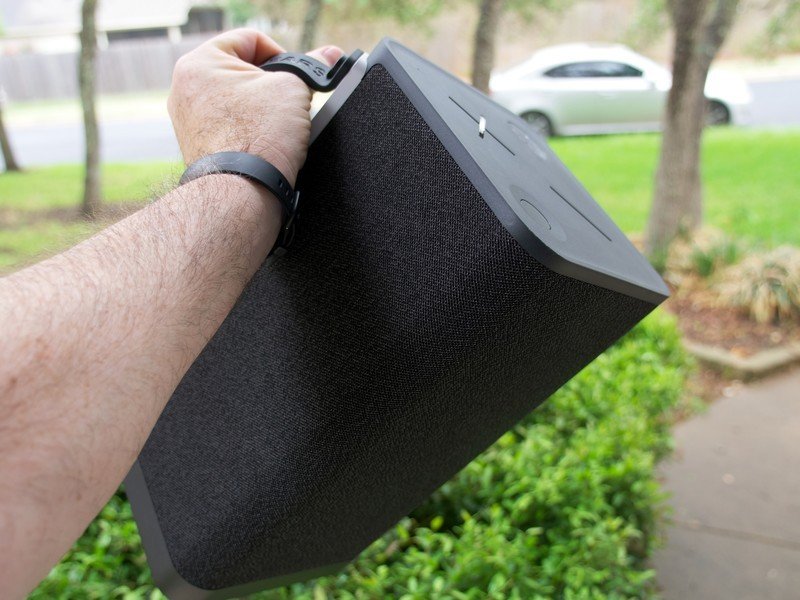
The first thing you'll notice when you pick up the Hyperboom is how big it looks. The second thing you'll immediately notice is how big it feels. When I unboxed this speaker, I half-joked to my wife that it was the size of a baby, and then when I looked at the specs, I was somewhat shocked to see that it actually weighs nearly as much as both of my kids did at birth, combined (they were about 15 pounds together). This is what I affectionately call a thicc boi, and at a whopping 13 pounds, this speaker is also twice as heavy as the Sonos Move and six times heavier than the Bose SounLink Revolve+. For a speaker that's supposed to be "portable" and meant to be dragged to the pool, the beach, or on your next epic camping trip, that's quite a load to lug around.
I hope you've been working those chicken arms out because hauling this beast around is a chore!
Speaking of carrying the Hyperboom, while I appreciate the handy handle that sits against the side of the speaker, it's not as comfortable or as useful as the handles on the top of similarly-sized competitors like the Sonos Move or the Bose SoundLink Revolve+. As you can see in the image above, the positioning of the handle means that you can sort of carry it lengthwise, but it tilts slightly at a weird angle that can be a bit uncomfortable if you have to carry it much of a distance. That being said, there are third-party travel cases for this speaker, so if you're considering getting a Hyperboom to actually take places, you might want to grab one of those too.
This is a minor quibble that's not that important to me, but I thought it worth mentioning. The Hyperboom doesn't come with any built-in smart voice assistant access, so you won't be able to shout across the room or the pool to change a track; that will have to be done through the app on your phone or the physical buttons on the top of the speaker.
The biggest drawback with the Hyperboom (and large "portable" Bluetooth speakers like it) is the price. At $400, you could easily pick up two, three, or even four smaller, lighter, more manageable devices that are probably more weatherproof as well.
Ultimate Ears Hyperboom: Competition

While there is a ton of competition in the smaller, more affordable outdoor Bluetooth speakers, there are really only a few big, bold, premium options that you might consider over the Hyperboom. The two that stick out most to me are the Sonos Move and the Bose SoundLink Revolve+.
The Sonos Move was the company's first portable and first Bluetooth-enabled speaker. All previous Sonos products were strictly meant for indoor use only and operated over Wi-Fi. Since the Move was meant to be used... well... on the move, Sonos had to give users the option to connect their smartphones or other mobile devices to it to stream audio on the go. Our review of the Move described it as simply "fantastic." At $400, it has price and feature parity with the Hyperboom.
Another great portable option for you audiophiles out there is the Bose SoundLink Revolve+. The Revolve+ has a tapered design with a large handle at the top, and it doesn't look or feel nearly as large as the Move or Hyperboom. It has an aluminum unibody design and premium 360-degree audio. Plus, it comes in at $50-$100 cheaper than the other two big speakers.
Finally, if you just want a really good sounding, durable, weather-resistant Bluetooth speaker but you don't want to break the bank (or your back), you might want to consider one of the myriad smaller portable devices like the JBL Charge 4, Sonos Roam, or Ultimate Ears Boom 3.
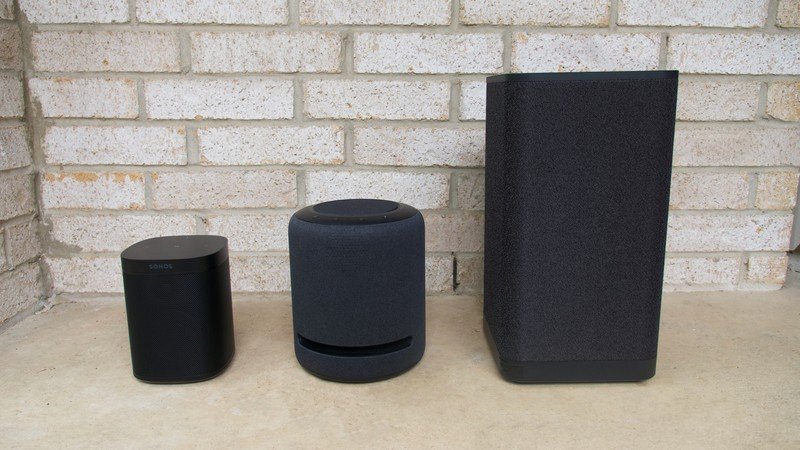
Ultimate Ears Hyperboom: Should you buy it?
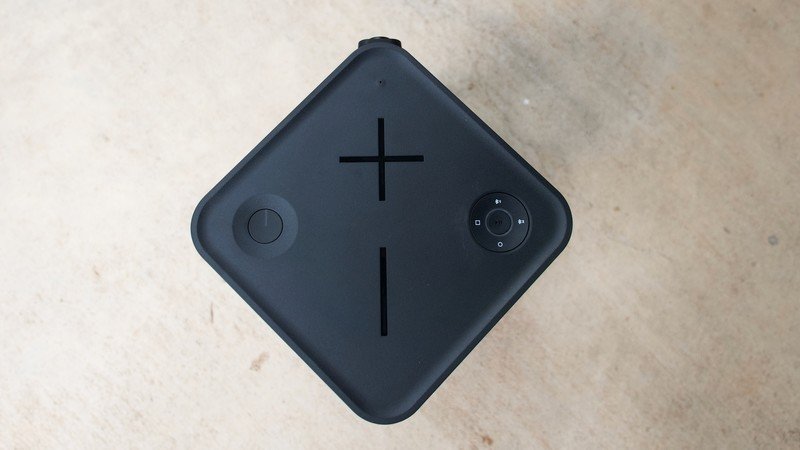
You should buy this if ...
- You want an amazing-sounding portable speaker
- You need to charge your phone from the speaker
- You primarily plan to use it in your home or your backyard
You shouldn't buy this if...
- You're not prepared to lug around a beast of a speaker
- You don't want to spend a small fortune
- You don't need amazing sound in your portable, rugged speaker
4 out of 5
If you've ever used an Ultimate Ears portable speaker before, you know how tough and durable they are, and the Hyperboom is no different. I almost feel like it could be a keystone in a house built out of tech devices; this thing is so solid. While it's pitched as a portable, weather-resistant Bluetooth speaker, it's more than capable of serving as a primary home speaker as well, even when connected to your other media devices. From that perspective, I think its high price tag is justified. However, if all you really want is a portable speaker that can handle being dropped or splashed, you can find that much cheaper and in a smaller form factor that is easier on your arms and back.

Jeramy was the Editor-in-Chief of Android Central. He is proud to help *Keep Austin Weird* and loves hiking in the hill country of central Texas with a breakfast taco in each hand.
